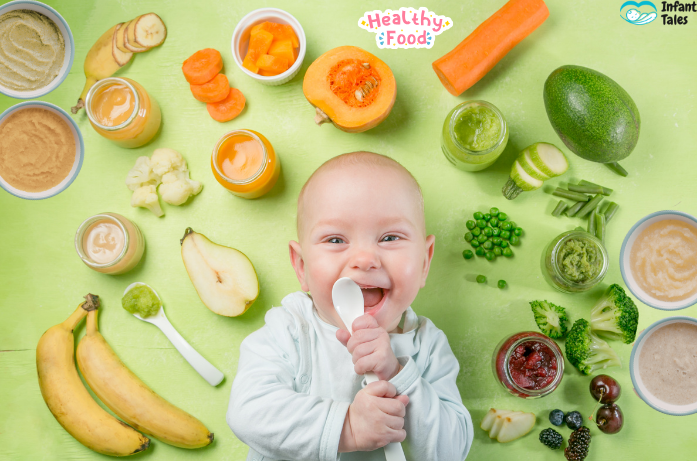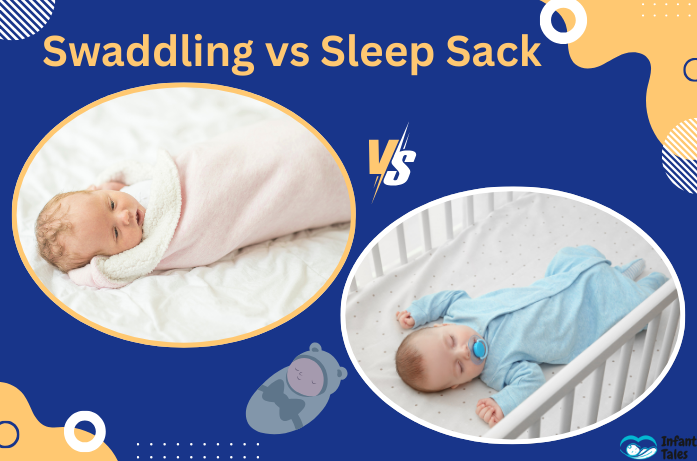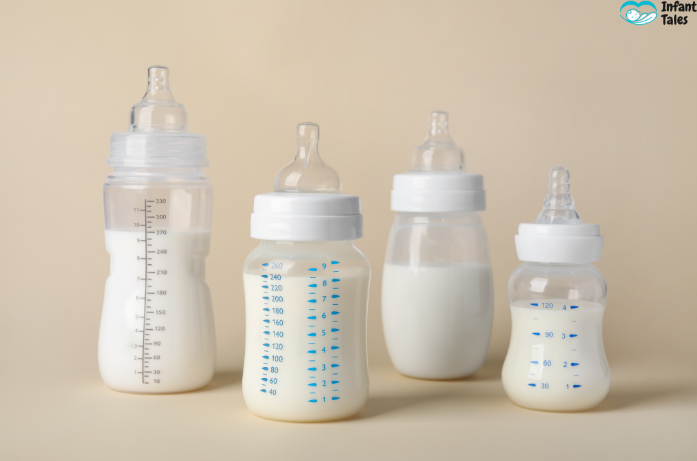A Parent’s Guide to Nutritious First Foods
By a Caring Mom at Infant Tales
Introducing your baby to healthy baby food ideas and nutritious first foods is one of the most exciting milestones of the first year. Those little spoons of puree, the funny facial expressions, and the mess all mark the beginning of a lifelong relationship with food. Many new parents feel unsure: What should I feed my baby, and how do I know it’s healthy?
The truth is that the foods we first feed a baby help to shape not only the physical growth of the little one but also his or her eating behavior later in life. In this guide, you will find homemade baby food recipes, nutritious baby food ideas, nutrient breakdowns, and stage-wise tips that will make you feel confident about mealtimes.
Why Nutrition in Baby food Matters
The baby’s body grows by leaps and bounds during the first year. According to the CDC Infant & Toddler Nutrition and the National Institutes of Health (NIH), in the first 12 months, babies triple their birth weight, while their brains grow faster than at any other time in life. They need for this:
- Iron for brain and blood health
- Protein for muscles and tissues
- Healthy fats for nerve and brain development
- Vitamins & minerals (A, C, D, E, K, calcium, folate, zinc, choline) for immunity
- Fiber and probiotics for digestion
Making homemade baby food ensures your baby enjoys fresh food that is free of preservatives and has balanced nutrients promoting strong bones, good immunity, and steady growth.
When to Begin Solids
Although breast milk or formula stays as the main nourishment at least until 12 months, solids are typically introduced by 6 months. according to the American Academy of Pediatrics, Readiness can be demonstrated through:
- Sitting with little support
- Good head and neck control
- Showing interest in your food
- Ability to swallow thicker textures
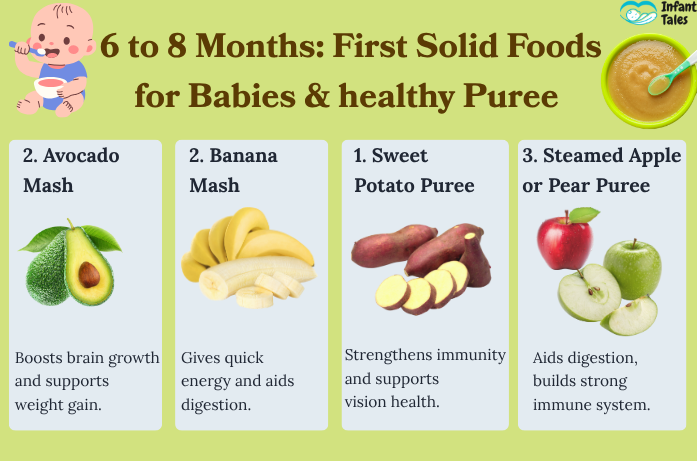
6 to 8 Months: First healthy baby food ideas & healthy Puree
Gentle flavors and simple textures become the thing to go for. Single ingredient healthy baby purees should be introduced one by one.
Best foods & nutrients:
- Avocado (Healthy fats, vitamin E, folate): Boosts brain growth and supports weight gain.
- Banana (Potassium, vitamin B6, fiber): Gives quick energy and aids digestion.
- Sweet potato (Vitamin A, C, potassium): Strengthens immunity and supports vision health.
- Apple or pear puree (Fiber, vitamin C): Aids digestion and builds strong immunity.
- Iron-fortified oatmeal (Iron, magnesium, fiber): Improves blood health and keeps tummy calm.
Parent tip: Mix purees with breast milk or formula for familiarity.
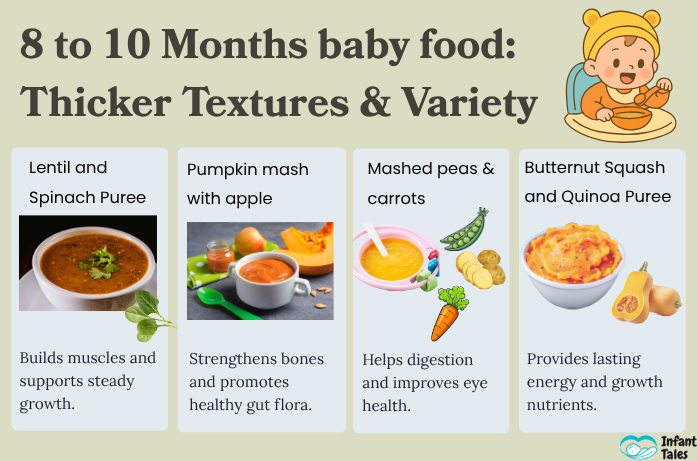
8 to 10 Months baby food: Thicker Textures & Variety
Thicker textures can be introduced, now that the baby can manage them-lumpy, it’s time for more nutritious baby meals with richer textures and mild flavors.
Best foods & nutrients:
- Lentils (Protein, iron, folate): Builds muscles and supports steady growth.
- Egg yolks (Choline, vitamin D, protein): Enhances memory and boosts brain development.
- Pumpkin mash with apple (Calcium, probiotics, protein): Strengthens bones and promotes healthy gut flora.
- Mashed peas & carrots (Fiber, beta-carotene): Helps digestion and improves eye health.
- Butternut Squash and Quinoa Puree (Protein, fiber, iron): Provides lasting energy and growth nutrients.
Promote independence: Offer safe finger foods, such as soft fruit slices, cooked vegetables, or small pieces of bread, to encourage baby-led weaning (BLW) safely.
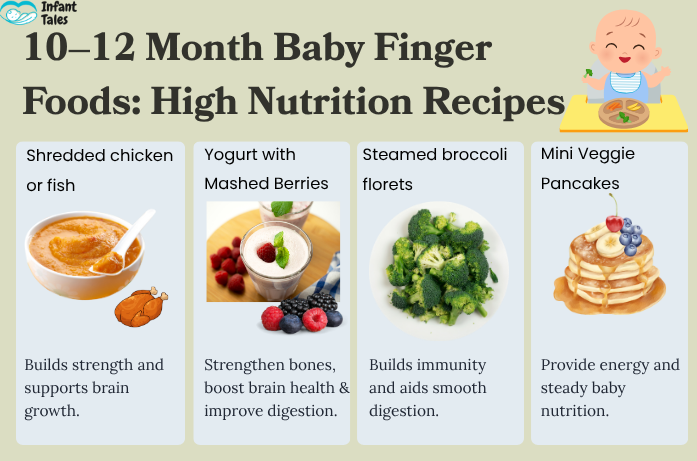
10 to 12 Month Baby Finger Foods: High Nutrition Recipes
By the first birthday, your baby can try bite-sized family foods. Encourage healthy finger foods for babies to develop chewing and self-feeding skills.
Best foods & nutrients:
- Shredded chicken or fish (Protein, omega-3, zinc): Builds strength and supports brain growth.
- Blueberries with Yogurt (Antioxidants, calcium, probiotics, vitamin C): Strengthen bones, boost brain health, and improve digestion.
- Steamed broccoli florets (Vitamin C, fiber, folate): Builds immunity and aids smooth digestion.
- Mini oat pancakes with fruit: (Iron, fiber, vitamins): Provide energy and steady baby nutrition.
Safety note: Avoid choking hazards like whole grapes, nuts, popcorn, or raw carrots.
Nutrient-Packed Baby Food Ideas
Here’s a closer look at popular nutritious baby foods and their benefits, supported by NIH Nutrition for Children:
Avocado
Avocado is a front-line baby food packed with monounsaturated fats, vitamin E, and folate, all of which are vital for brain development and healthy weight promotion. Its smooth, creamy texture allows for a thick puree or mash.
Sweet Potato
They contain vitamin A, vitamin C, and potassium. The nutrition helps build immunity, good eyesight, and energy. The sweetness is tasteful to the baby, so they are among the easiest baby weaning foods.
Banana
The easy choice for mothers on the go! Bananas offer carbohydrates, vitamin B6, and fiber, which serve to provide quick energy and digestion. Mash them or slice them for easy baby self-feeding snacks.
Oats
Comfort to the belly and great for sustained energy sustenance. Rich in iron, fiber, and magnesium, they aid in digestion and healthy weight gain in babies; an apt foundation for homemade baby porridge, too.
Eggs
Superfood indeed for babies. They consist of good quality protein, iron, and choline to nurture brain growth and blood health. Begin with cooked yolks at around 7 months, then slowly introduce whites.
Spinach
The green powerhouse of nature! Spinach contains iron, folate, and vitamin K to prevent anemia and strengthen bones. Put them in soups, kitchari, or purees for added nutrients.
Blueberries
These tiny berries have an abundance of antioxidant, vitamin C, and fiber content, thus supporting immune health and cell protection. See what you can do to mash them straight into yogurt for a colorful and tasty treat.
Chicken
Soft, shredded boiled chicken is a lean source of protein, zinc, and vitamin B6, essential for muscle development and a healthy immune system. Thus, it provides a lovely variety to your child’s non-vegetarian diet.
Yogurt
Fatty calcium, probiotics, and protein are good for bone-building and gut health. For babies, use plain, unsweetened yogurt and then mix it with fruits such as mango or pear to add flavor.
Each of these homemade baby foods can be introduced gradually and combined for a balanced baby food meal plan.
Sample One-Day Baby Meal Plan (10–12 Months)
A well-structured baby meal plan ensures your child gets all the essential nutrients throughout the day. Here’s an easy, balanced example for babies between 10–12 months:
Breakfast: warm oatmeal with mashed banana for a rich source of iron, potassium, and fiber for steady source of energy in the morning.
Mid-Morning Snack: yogurt mixed with blueberry puree to bury calcium, antioxidants, and probiotic for strong bones and well-balanced guts.
Lunch: vegetable khichdi with a small spoon of ghee, a power-packed meal consisting of protein, vitamins, healthy fats, and carbs for keeping your baby full.
Evening Snack: Steamed slices of pear make for gentle snacks rich in fiber that help digestion and soothe teething gums.
Dinner: Mashed sweet potato mashed with shredded chicken forms a comfortable and heavy meal loaded with vitamin A, protein, and zinc.
Before Bed: Breast milk or formula remains important as the mainstay of baby feeding, nutrition, and hydration.
This particular sample plan ensures your baby against mixing carbohydrates, proteins, fats, and vitamins-the hard basis for healthy baby development.
Baby-Friendly Snack Ideas
Healthy snacks keep little tummies full between meals:
- Steamed apple wedges
- Mashed chickpea patties
- Soft paneer cubes
- Vegetable idlis (mini rice cakes)
- Homemade teething biscuits (sugar-free)
Safety Rules for Baby Food
- No honey before 1 year of age (risk of botulism).
- No cow’s milk as a drink until after 12 months (fine in cooking).
- Always cut food into tiny, soft pieces.
- Introduce allergens gradually (peanut butter, egg, fish) with medical advice.
- Never leave your baby unattended while eating.
FAQs About Baby Food
Q. 1 How many times should babies eat solid food?
Beginning with one solid food meal at six months and gradually increasing to three meals and two snacks by 12 months.
Q. 2 Should I give supplements?
Doctors sometimes recommend vitamin D or iron drops. Follow the pediatrician’s advice.
Q. 3 Can I add spices?
Mild flavors such as cinnamon, cumin, or turmeric are fine after eight months. Do not give anything hot.
Q. 4 Is store-bought baby food okay to give?
Yes, provided that you buy organic, preservative-free varieties. Homemade is fresher and cheaper.
Q. 5 What if my baby refuses food?
It’s normal! An infant needs multiple exposures before accepting new tastes. Keep gently trying.
Final Thoughts
Corners of the mealtime with the baby a lot of things to offer bonding, exploring, and enjoyment, beyond just food. Through offering foods rich in nutrients and nutrient-dense with varying textures finishing the developmental phase for the child and instilling in him or her the love for healthy foods.
Every baby is equally wonderful. Others need just up to eat in a hurry, whereas some keep their pace slow. Be patient and trust your instincts; finally, cheer out for every tid-bit, it is the adventure.
Disclaimer: The article is for informational purposes only. It is not medical advice. Always consult with your pediatrician before introducing any new foods, particularly if your child has any allergies or health concerns.
At Infant Tales, we believe every bite your baby takes is a step toward a lifetime of healthy eating.
Explore more healthy baby food recipes, feeding tips, and developmental guides on our blog, because mealtime should be full of love, learning, and little smiles. 💕
